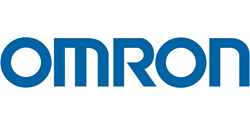Not all entrepreneurs are experienced in new product development. By doing research and leveraging resources, like those provided via the Arrow Certification Program, you can help to cut down on the learning curve. In this article we’ll present five key considerations to help you get started.
1) Understand Your Audience:
Who is your core audience? What problem does your product solve? How are people going to use it? Your user's needs should be at the core of your ideation phase. Make sure to research similar products on the market to understand how your product will differentiate itself.
While it can be tempting to come up with a list of cool features first and then invent problems for those features to solve, it’s important to understand what your audience actually requires before you begin brainstorming those features.
When you’re ready to think about features, be specific. What functions do you want your product to perform? How will your product solve a problem better than others on the market?
2) Use Block Diagrams:
A block diagram is a simple representation of the different components within your product. It’ll give you a high-level overview of the system behind your product, while giving you an idea of essential components and possible areas for troubleshooting. For example, a flowchart for a smartphone would include, among other things, a processor, display, microphone, battery, and a camera.
3) Leverage Development Kits:
Development kits (also called devkits or development boards) cut down on your learning curve and help expedite getting to a functional prototype stage. Each kit is focused on a specific component or development platform.
Think of development kits as lego blocks. If you’re not quite sure how to begin, you may want to start with a more generalized development kit, like Raspberry Pi, Arduino, or Jetson Nano. As you realize your product’s needs, you can integrate additional development kits like sensors, or a wifi/bluetooth unit like Particle Inc’s BRN402KIT.
Creating a working prototype is essential for moving forward with your project. A prototype will help you entice backers, get media attention, and raise more funding.
4) Learn From Similar Projects:
Leveraging other people’s knowledge will help you get up to speed a lot faster than trying to figure things out on your own. Be thorough in researching what other product developers have accomplished to prevent reinventing the wheel.
Use open source resources to your advantage and look at how other development kits have been used. If you find a process that seems like it would work for you, use that as a starting point. After all, that’s the purpose of open source information. Think of it as using a cookbook: You can use a recipe as is, or you can alter it to suit your own tastes.
5) Access Industry Experts for Additional Help:
Entrepreneurs often struggle to find reliable answers when they run into challenges that can lead to frustration and delays.
By joining the Arrow Certification Program, you’ll get connected to a team of expert engineers from Arrow, along with access to tools and resources to help bring your new product to life.
The Arrow Certification Program is a partnership between Arrow Electronics and Indiegogo that helps entrepreneurs create innovative tech products. The program is free of cost, and any entrepreneur building a product with electronic components or software is welcome to join.
--
Join the Arrow Certification Program today!
Ähnliches Produkt:
A000073 | Arduino Uno Rev3 SMD
Arduino Corporation Eingebettete Systementwicklungsboards und -kits AnzeigenÄhnliches Produkt:


